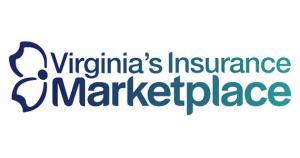Virginia: Actual OEP enrollment *up* a percent or two after all w/auto-renewals included...for now

A week or so ago, when the Centers for Medicare & Medicaid Services (CMS) issued their first official "snapshot report" of the 2024 Open Enrollment Period, I noted that unlike most states which have seen dramatically higher initial enrollment numbers, Virginia saw a dramatic drop in initial 2-week enrollment:
At the opposite end of the spectrum, Virginia is running a whopping 64% behind their 2023 OEP enrollment at this point, almost certainly due to the state moving off of the federal exchange onto their own platform; since current enrollees have to actively log into a whole new account and go through a different interface to enroll for 2024, there's no doubt a lot of confusion at the moment. Hopefully this will straighten itself out by the time OEP ends, however.
Officially, CMS reported that Virginia had 44,943 people select Qualified Health Plans (QHPs) in the first 12 days of the 2023 Open Enrollment Period (OEP) vs. just 14,815 in the first 11 days of OEP this year. When adjusted for the missing day, that's a 64% drop in new and actively-renewing enrollees.
HOWEVER, like several other state-based exchanges such as Maine and New Mexico, Virginia's new SBM appears to be "front-loading" their auto-renewals as well, which won't be reflected in the official CMS report until after the 2024 OEP ends.
There's no official press release from Virginia's new Insurance Marketplace (yes, they gave their state-based ACA exchange the most boring name possible), but this article by Meghan McIntyre from a couple of weeks ago gives a good overview of how the launch and transition from the federal exchange (HC.gov) has actually been going:
A new state insurance marketplace Virginia launched Nov. 1 saw large numbers of applicants in the first week of the open enrollment period.
...Katha Treanor, a spokesperson for the State Corporation Commission, said over 10,000 applications to shop for health insurance through the marketplace were submitted from Nov. 1 to Nov. 8. Additionally, Treanor said over 340,000 Virginians who previously accessed coverage through healthcare.gov have successfully been transferred to and reenrolled in the state marketplace.
This article only includes the first week of OEP, so the "over 10,000" is presumably included as part of the 14,815 people in the CMS report.
However, the over 340,000 existing enrollees who were automatically transferred over and auto-renewed is what's more interesting.
During the 2023 OEP, Virginia enrolled a grand total of 346,140 people in QHPs by January 15th. There's always a small percent of those who sign up who are never actually effectuated due to failing to pay their premiums or cancelling coverage at the last minute, plus some attrition over the course of the year; as a result, by the time the following OEP rolls around on November 1st, current enrollment is usually down significantly (though the retention rate has been increasing gradually the past few years).
Last year, for instance, out of ~16.4 million people who selected QHPs during Open Enrollment, only 12.7 million renewed or re-enrolled in policies...around 77.4% nationally. And yet according to this article, the VA exchange has already auto-renewed over 98% of last year's total enrollment tally, plus the ~10K new applicants (although it's possible some of those are current enrollees who actively logged in and re-enrolled).
In other words, as of November 7th, Virginia enrollment was likely a few percent higher than last year's final OEP enrollment. This could still change over time, of course, since some of those ~340K auto-renewed enrollees will cancel their coverage before January, but the point is that Virginia's transition appears to be going much better than the "64% drop" would indicate, as I expected.
As for why the renewal pool is so high, there's an obvious explanation for that as well:
Officials say this year’s sharp increase in enrollees is largely due to the over 200,000 Virginians who have lost Medicaid coverage so far as the state reevaluates who is still eligible for the program after the end of pandemic-era continuous coverage requirements. As a result, many former Medicaid enrollees are now turning to the state exchange for insurance.
That doesn't mean all 200,000 of the Unwinding population have moved to ACA exchange plans; only ~11,000 had done so as of the end of July, perhaps up to 50K or so as of today. But it does explain the jump from 77% last year to 98% this year.
There's one part of the article I'm not sure I really understand, however:
While premiums for individual Virginians have remained relatively stable this year, Patchett said those prices could have been higher had the commonwealth remained in the federal exchange. According to the Kaiser Family Foundation, insurers offering plans through the federal marketplace are proposing a 6% average premium hike for next year.
In 2024, the average weighted monthly premium for individuals in Virginia is projected to be $483. That figure was initially projected to be $579; however, last-minute funding from the General Assembly this summer for the state’s reinsurance program reduced those rates by approximately 2.4%.
It's true that Virginia's reinsurance program & funding has reduced premium hikes from over 22% down to just 1.1% over last year, but as far as I know that had absolutely nothing to do with the state moving to their own exchange; they were doing that whether the reinsurance program had been funded or not, and plenty of other states which are hosted on the federal exchange have similar reinsurance programs.
The only reason moving to an SBM might have reduced the rate increases is if Virginia's SBM has lower user fees than HealthCare.Gov. This is possible, but HC.gov has reduced their user fees significantly the past few years, and any SBM savings would be nominal at this point (perhaps a quarter percent or so?).
In any event, Virgina's transition seems to have gone through pretty smoothly after all.



